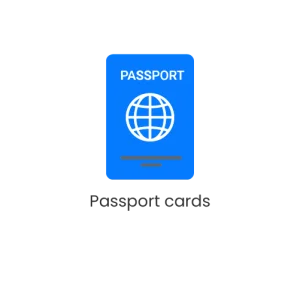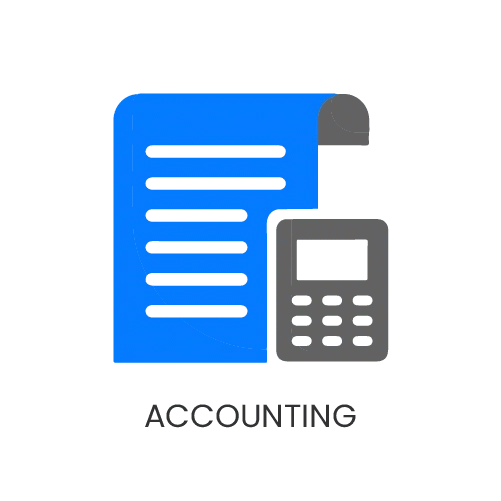Graduate Management Admission Test (GMAT)

Table of content
About
Facts
Test Structure
Scores
Preparation
Eligibility
Best Books
Registration
FAQs
About the GMAT
Why You Must Take the GMAT
- The GMAC has collaborated with the faculty of leading graduate management schools worldwide to develop the test.GMAT has been developed based on more than six decades of peer-reviewed research and testing expertise, which helps ensure its relevance at all times.
- The GMAT helps business schools to test the analytical and problem-solving abilities of a candidate and analyze their readiness for the program.
- The standardized exam is taken by aspirants across 114 countries. It allows the business schools to compare aspirants from different academic and professional backgrounds with ease.
- The fact that the GMAT is a computer-adaptive exam means that the difficulty level of questions will increase or decrease depending on the accuracy of the candidate’s answers. This test is more efficient than paper-based test, where every candidate answers the same set of questions.
- Being highly secured and computer adaptive, GMAT questions cannot be easily memorized by candidates, making it unlikely that two aspirants will attempt the same set of questions.
- A good GMAT score indicates that the candidate possesses the basic knowledge required to cope with the MBA curriculum and can do well if admitted to an MBA program.
- GMAT scores are often one of the requirements for scholarships across countries. Thus, a good GMAT score can increase the chances of securing admission to a desired MBA program and help to secure scholarships.
- GMAT scores are just one of the many factors that business schools consider when evaluating MBA applicants.
Quick GMAT Facts
| Section | Analytical Writing Assessment, Integrated Reasoning, Quantitative Reasoning, and Verbal Reasoning |
| Exam Duration | 3 Hours 7 Minutes (187 Minutes) |
| Total Test Centers in the World | There are more than 650 test centers across 114 countries |
| Frequency of Exams (GMAT) | 7 days a week |
| Retakes Allowed | 5 attempts in 12 months, and 8 attempts in a lifetime |
GMAT Sections and Test Structure
The GMAT comprises of four sections and lasts for 3 hours 7 minutes.
| Section | Number of Questions | Question Types | Time | Score Range |
| Analytical Writing Assessment (AWA) | One Topic | Analysis of Argument | 30 minutes | 0-6 (in .5 increment) |
| Integrated Reasoning (IR) | 12 Questions | Multi-Source Reasoning, Graphics, Interpretation, Two-part Analysis, Table Analysis | 30 minutes | 1-8 |
| Quantitative Reasoning | 31 Questions | Data Sufficiency, Problem Solving | 62 minutes | 6 to 51 |
| Verbal Reasoning | 36 Questions | Reading Comprehension, Critical Reasoning, Sentence Correction | 65 minutes | 6 to 51 |
| Two Breaks | 8 minutes + 8 minutes |
GMAT Section Order
You can choose the order of GMAT section from the below three options
| Order 1 (Default Option) | Order 2 | Order 3 |
| Analytical Writing Assessment | Verbal Reasoning | Quantitative Reasoning |
| Integrated Reasoning | ||
| Optional 8-Minute Break | ||
| Quantitative Reasoning | Quantitative Reasoning | Verbal Reasoning |
| Optional 8-Minute Break | ||
| Verbal Reasoning | Integrated Reasoning | Integrated Reasoning |
| Analytical Writing Assessment | Analytical Writing Assessment |
GMAT Quant Reasoning Section
The GMAT Quant Reasoning section comprise two types of questions – Data Sufficiency and Problem Solving. It tests a candidate’s ability to logically think and interpret math concepts.
- Data Sufficiency: A candidate may be required to answer 13-14 questions. Each question comprises a question stem and two data statements. A candidate is not asked to deduce the mathematical answer, but rather to check if the data statements provide sufficient information required to solve the problem.
- Problem-Solving: As the name suggests, this section presents questions that a candidate is asked to solve to find the right value. It may feature 17-18 questions. Each question features a question stem and five possible answers. This section evaluates a candidate’s quantitative and analytical reasoning skills, which are essential for success in a business and management program.
GMAT Verbal Reasoning Section
Verbal section of the GMAT evaluates a candidate’s command of English language skills. It comprises three types of questions – Reading Comprehension, Critical Reasoning, and Sentence Correction.
- Reading Comprehension: A candidate will be presented with 12-14 reading comprehension questions with passages accompanied by 3-4 questions in the text. These passages may be related to social science, business, biological science, and physical science topics. Reading comprehension analyzes a student’s reading skills, including their ability to interpret and make inferences from the text, articulate ideas and summarize them and analyze the structure of the passage logically.
- Critical Reasoning: A candidate will be presented with 9-10 critical reasoning questions, which should be answered based on the series of arguments. A candidate has to find a conclusion or make an assumption to weaken or strengthen an argument. It basically tests a candidate’s skills in evaluating arguments and forming an action plan based on it.
- Sentence Correction: This section comprises 12-13 questions with long sentences. A sentence may be underlined partly or entirely and a candidate may be asked to choose the best answer from five alternatives. The original sentence may or may not have errors. Sometimes there may be an error or multiple errors. The answer choices may introduce errors, too. So, you need to be careful while reading or answering the questions.
Integrated Reasoning
It features four types of problems, including Multi-Source Reasoning, Table Analysis, Graphics Interpretation, and Two-Part Analysis. It tests the verbal and quant skills of a candidate.
- Table Analysis: As the name suggests, the questions are presented in a table format in this section. This question type resembles a spreadsheet and a candidate can sort the table by selecting the drop-down menu. The table may have 4 to 8 columns as well as several rows of data, and a candidate is required to solve the problem based on data. The problem is presented in true or false statements. A candidate has to answer at least three statements to answer one problem.
- Multi-source Reasoning: A candidate is presented with two or three informational tabs, which may comprise text, visuals, and tables. A candidate is prompted to solve three different problems based on these tabs. The questions may be in true or false or a 5-answer multiple choice format. Like the Table Analysis, if the problem is presented in a true or false format, a candidate must choose three statements to complete the problem.
- Graphics Interpretation: These problems are generally presented in visual format as bar graph, pie chart, genetic map, organizational chart, etc. A candidate must read the visual representations to understand the information offered and answer the accompanying questions. These questions would be presented in the form of sentences and blanks. The blanks should be filled using choices from the drop-down menu.
- Two-part Analysis: A candidate has to answer two questions instead of one in this segment. For instance, a question may require you to find x and y variables or strengthen and weaken an argument. The correct answer must be chosen for a two-part question from a set of 5 or 6 answer choices.
Analytical Writing Assessment
The Analytical Writing Assessment doesn’t contribute to your 200-800 score, but business schools use this section to interpret your writing skills. The assessment is analyzed by a computer system as well as a human grader. The scores from these sources are averaged to receive the final score. A candidate is asked to interpret and critique the argument presented by an author, analyze the soundness of an author’s reasoning and evidence.
GMAT Syllabus
GMAT Syllabus for Analytical Writing Assessment (AWA)
In Analytical Writing, a candidate has to write and read and answer the question accompanying an essay. There is 1 essay in the AWA section.
Argument Essay: In this section, the reasoning and all underlying assumptions must be considered. The candidate must analyze the statement and argument in isolation without biases.
GMAT Syllabus for Integrated Reasoning
This section has been added to the GMAT recently. It comprises 12 questions of the following type:
- Two-Part Analysis: This section tests a candidate’s ability to interpret and solve problems. These problems can be of quantitative, verbal, and a combination type.
- Table Analysis: This section tests a candidate’s ability to sort the table to find the most important information that may be relevant to solve the problem. The table may comprise information, such as statistics, ratios, probabilities, and so on.
- Multi-Source Reasoning: This type of information is presented in the form of graphics, charts, and tables. The candidate is expected to collate the information and interpret it.
- Graphics Interpretation: In this section, the candidate has to interpret the graphics presented. The graphics may feature line plot, scatter plot, box plot, area under curve, cumulative frequency distribution, probability frequency distribution, confidence level graph, x/y graph, pie chart, statistical curve distribution, or bar chart.
GMAT Syllabus for Quantitative Reasoning
There are 31 questions in this section, which are distributed across data sufficiency and problem solving.
- Data Sufficiency: It tests the candidate’s ability to look at the quantitative problem, identify important data, as well as find enough data required to answer the problem.
- Problem Solving: In this section, the candidate is driven to use their analytical reasoning and logic to answer quantitative reasoning questions.
GMAT Format for Verbal Reasoning
This section comprises three types of questions – critical reasoning, reading comprehension, and sentence correction:
- Critical Reasoning: It measures the candidate’s ability to evaluate arguments and make a plan of action.
- Reading Comprehension: This section measures the candidate’s ability to evaluate the argument and draw inferences from it. The questions require candidates to focus on main idea, logical structure, supporting ideas, and style.
- Sentence Correction: In this section, a candidate has to identify errors or omissions, misplaced modifiers, subject-verb disagreement, and so on.
Tips for GMAT Preparation
Learn how to prepare for GMAT by focusing on three key sections: Quantitative Reasoning, Verbal Reasoning, and Integrated Reasoning. In the Quantitative Reasoning section, develop mastery in data sufficiency and problem-solving skills, covering topics such as algebra, statistics, and geometry. The Verbal Reasoning section, consisting of Reading Comprehension, Critical Reasoning, and Sentence Correction, requires a strategic approach in understanding passages, evaluating arguments, and correcting sentences. Integrated Reasoning, with question types like Two-Part Analysis and Graphics Interpretation, demands careful data analysis and interpretation. The following tips for each section will guide you through a successful GMAT preparation journey, ensuring a well-rounded and effective study plan.
Quantitative Reasoning
This section comprises data sufficiency and problem-solving questions. It tests your math skills such as value order and factors, algebra, equalities and inequalities, ratios, rates, and percentages, statistics, sets, counting, probability, estimation and series, and geometry. The tips offered in this section will help you solve problems effectively.
Data Sufficiency: These questions measure your ability to analyze a problem and find relevant data required to solve the problem.
- Check if the question offers you only one value or a value range required to solve the problem.
- Do not make assumptions based on geometric figures.
Problem Solving: These questions measure your analytical and logical reasoning skills.
- Check the on-screen timer while answering the questions.
- Read the questions carefully and do not spend much time on challenging questions. You can attempt them later.
- Read the sentence question carefully to translate the data provided into equations or mathematical representations.
- Work out your answers on an erasable note board provided at the center to deduce answers.
- Try to do mental mathematics for questions that require approximations. Then try to find similar answers in the data provided.
Verbal Reasoning
This section comprises 36 multiple-choice questions of three types – Reading Comprehension, Critical Reasoning, and Sentence Correction.
Reading Comprehension.
- Read the passages carefully. Some passages may appear quite familiar than others, but do not presume answers. Always answer the questions based on the information provided in the passage.
- Focus on how a fact relates to an argument or idea, how passages discuss different ideas, try to understand keywords or phrases that indicate this transition of ideas, distinguish the main ideas as well as supporting ideas of the passage, and determine the conclusions offered in the passage.
- Read the answers carefully and choose the best one that matches the information in the passage.
Critical Reasoning
- Read the statements carefully and try to interpret the factual information and claims put forward.
- Understand the soundness of reasoning put forward by the statement.
- For questions based on arguments, try to understand which argument part can form the conclusion.
- Read the questions before reading the arguments, this would prepare you for the answer.
- Read all the answer choices carefully before answering the question. Do not presume any answer due to the familiarity of the question.
Sentence Correction
- Read the sentence and answer choices carefully.
- Focus on the underlined part of the sentence as it may have errors and require possible corrections.
- Think about how to correct the mistakes in the original sentence.
- Focus on idiomatic and grammatical usage, clarity, language precision, diction appropriateness, etc.
- Substitute the most appropriate answer choice in the underlined sentence.
- Generally, the first answer choice is the repetition of the underlined passage. Some sentences may not require corrections, and in such scenarios, you can always choose the first answer choice.
Integrated Reasoning
This section will present you with 12 questions of four types – Two-Part Analysis, Graphics Interpretation, Table Analysis, and Multi-Source Reasoning.
Multi-Source Reasoning
- Analyze the data source carefully, because the questions can be answered better once you gain a thorough understanding of the given data.
- In text passages, the ideas are presented in sequences, which contribute to the main idea passage. So, read and interpret them carefully.
- The questions may feature graphic elements such as graphs, tables, charts, and diagrams.
- Read all questions carefully to understand what is being asked. Sometimes, you may be asked to identify the discrepancies or draw inferences between data sources. Else, you may be required to identify relevant data sources.
- Answer the questions based on the provided data.
Table Analysis
- See the table and accompanying text to know the type of information offered.
- Read the question and evaluate every answer statement carefully based on the specified condition. This condition may be yes/no or true/false.
Graphics Interpretation
- See the data presented in graphics carefully. Check the marked values, scales on the axis, and labels. Check if there are any discrepancies between the graph units or the units in the text.
- Read the text accompanying the graph, as it may comprise data that is not included in the graphic, but necessary to answer the question.
- Check all choices offered in the drop-down menu. With this, you may get additional information required for your assigned task.
- Select the option that completes the statement accurately.
Two-Part Analysis
- You will see a two-part analysis question that presents a brief problem or scenario and you may be required to choose two answers.
- See what the question exactly wants you to do. The headings of response columns may sometimes lack details that would help you understand the question requirements.
- Make a final choice of answers after reviewing them.
- You may be provided independent or dependent tasks.
- A question may have two tasks that need to be performed independently. Else, a question may have one task with two independent parts.
- An answer may serve for both columns.
Analytical Writing Assessment (AWA)
- Identify the weaknesses and strengths of the argument.
- When writing a response, you must consider the underlying assumptions, counterexamples that may arise, additional evidences that would strengthen or weaken the argument, and if your response reads like a discussion.
- Ensure your response comprises full sentences, logical transitions between two ideas, a coherent organizational scheme, and examples, which are neatly organized and introduced.
- Always draw examples from your experiences, observations, or reading.
How to Utilize GMAT Mock Tests to Improve Your Results
Every year thousands of individuals attempt the GMAT, however, only a few succeed with good scores. GMAT mock tests help distinguish between candidates with good and average scores. A mock exam simulates the original test and allows an individual to practice and boost their confidence. The Graduate Management Admission Test or GMAT tests an individual for diverse skills. Thus, to master GMAT, you must be involved in every aspect of the preparation and GMAT mock tests can help you with it. These tests would help you analyze your strengths and weaknesses and work accordingly. Here’s is how mock tests will help you ace the GMAT with good scores:
- You will be prepared for the big day because GMAT mock exams are similar to the real GMAT. These exams will help you get familiarize yourself with the syllabus, difficulty level, format, and so on.
- You can try different methods for solving the questions.
- You can learn time management and identify areas that require more time than others.
- GMAT mock exams will help ease your nervousness and fears regarding the main exam.
- With weekly tests, you can track the progress. You will be able to see how you have improved or the areas where more improvements may be required.
GMAT Score
A good GMAT score improves your chances of getting admitted to a top business school. A score of 690+ is considered good. The below section gives you an overview of GMAT scores and percentile.
| GMAT Score | Percentile | Score Description |
| 800 to 760 | 99% | Best |
| 750 -700 | 98% -90% | |
| 690-650 | 84% -70% | Competitive |
| 640-600 | 64% -50% | Good Enough |
| 550 | 38% | |
| 500 | 25% | Average |
| 450 | 15% | |
| 400 | 10% | |
| 350 | 5% | |
| 300 | 3% | |
| 250 | 1% | |
| 200 | 0% |
GMAT Sub-Section Wise
| Verbal Score | Verbal Percentile | IR Score | IR Percentile |
| 51 | 99% | 8 | 90% |
| 46 | 99% | 7 | 79% |
| 40 | 90% | 6 | 64% |
| 35 | 74% | 5 | 47% |
| 30 | 56% | 4 | 31% |
| 25 | 37% | 3 | 17% |
| 20 | 21% | 2 | 8% |
| 15 | 9% | 1 | 0% |
| 10 | 2% |
| Quant Score | Quant Percentile | AWA Score | AWA Percentile |
| 51 | 97% | 6 | 87% |
| 46 | 53% | 5 | 56% |
| 41 | 34% | 4 | 18% |
| 36 | 22% | 3 | 4% |
| 31 | 14% | 2 | 1% |
| 26 | 8% | 1 | 1% |
| 21 | 5% | 0 | 0% |
| 16 | 3% | ||
| 10 | 1% |
GMAT Cut-Offs for Top Business Schools Across the World
MBA in the USA
The USA hosts almost 15 of the top 50 business schools in the world. Hence, the GMAT cut-off is one of the highest across the world. The below table offers insights into average GMAT scores for the top 10 business schools in the US.
| University | Average GMAT Score | GMAT Score Range |
| Stanford University (CA) | 738 | 610-790 |
| Harvard Business School | 738 | 590-790 |
| Penn Wharton | 733 | 720-770 |
| MIT Sloan | 730 | 690-730 |
| Columbia Business School | 729 | 550-780 |
| UC Berkeley (Haas) | 729 | 700-760 |
| Chicago (Booth) | 729 | 600-780 |
| UCLA | 711 | 660-760 |
| Northwestern (Kellogg) | 729 | 620-780 |
| Yale School of Management | 725 | 690-760 |
MBA in Canada
Canada is one of the top study abroad destinations for Indian students wishing to pursue MBA. Affordability and global recognition for MBA programs are the reasons that attract students to this country. If you have been considering MBA in the country, you must know the GMAT cut-off scores. Below given are some popular Canadian business schools and their GMAT cut-off scores.
| University | Average GMAT Score Cut-Off |
| Toronto (Rotman) | 674 |
| Smith School of Business | 645 |
| Western (Ivey) | 680 |
| McGill (Desautels) | 675 |
| York (Schulich) | 636 |
| UBC (Sauder) | 550 |
| Alberta School of Business | 550 |
| Concordia (John Molson) | 580+ |
| HEC Montreal | 630 or Higher |
| Dalhousie (Rowe) | 550 |
MBA in Europe
Countries like the UK, France, Germany, Ireland, Sweden, and the Netherlands are popular with Indian students wishing to pursue MBA in Europe. If you want to pursue MBA from any of these countries, you must possess a weighted average score of 650+. The below table will help you understand average GMAT score cut-off across the top 10 leading business schools in Europe.
| University | Average GMAT Score Cut-Off |
| HEC Paris | 700 |
| London Business School | 703 |
| IE Business School | 677 |
| INSEAD | 710 |
| IESE Business School | 670 |
| Esade Business School | 660 |
| Oxford (Said) Business School | 690 |
| Cambridge (Judge) Business | 690 |
| Imperial College Business School | 600 |
| SDA Bocconi | 700+ |
MBA in Australia and New Zealand
Australia and New Zealand are home to some of the best business schools in the world. These countries admit students with work experience and high GMAT scores. The following table offers insights into GMAT cut-off scores required to get admitted to top business schools in Australia and New Zealand.
| University | Average GMAT Score Cut-Off |
| Melbourne Business School | 695 |
| UNSW (AGSM) | 679 |
| Monash Business School | 650 |
| Macquarie Business School | 680 |
| UQ Business School | 550 |
| University of Western Australia Business School | 650 |
| Australian National University | 600+ |
| Unisa Business School, University of South Australia, Australia | 550 |
| Otago Business School | 550 |
| UTS Business School, University of Technology Sydney, Australia | 550 |
MBA in the Asia-Pacific Region
Today, students head to business schools in the Asia-Pacific region to pursue management courses. Affordability, quality education, and global acceptance are some reasons that draw students to these schools. The below table will give you an idea of average GMAT cut-off scores required to seek admission to some of the popular business schools in the Asia-Pacific region.
| University | Average GMAT Score Cut-Off |
| INSEAD | 710 |
| ESSEC Business School | 600+ |
| National University of Singapore (NUS) | 670 |
| Nanyang NTU Singapore | 677 |
| CEIBS | 678 |
| University of Hong Kong | 633 |
| IIM Ahmedabad | 706 |
| HKUST | 660 |
| IIM Bangalore | 700+ |
Best Books for GMAT Preparation in 2025
The following are the best books for GMAT preparation in 2025.
| Book Name | Features | Cost | Where to Buy From |
| GMAT™ Official Guide Bundle 2022: ebook & Online Question Bank | This guide combines three eBooks: GMAT™ Official Guide, Quantitative Review, and Verbal Review. You can find online question banks, detailed answer explanations, updated verbal and quantitative review chapters, mobile app for online and offline practice and online flash cards | $81.99 | Mba.com |
| GMAT™ Official Guide Verbal Review 2022: ebook & Online Question Bank | This guide features 340+ verbal review questions, as well as detailed answer explanations. You can use mobile app to practice online or offline. | $20.99 | Mba.com |
| GMAT™ Official Guide Quant Review 2022: ebook & Online Question Bank | This guide features 25 new review questions and over 370 practice questions from past GMAT. You can use mobile app to practice online or offline. | $20.99 | Mba.com |
books content
Registration for GMAT Exam
slider of steps
GMAT Eligibility Criteria
GMAT is open to candidates across the world. There are no limitations on gender, religion, educational qualifications, and so on. However, a candidate must meet the basic eligibility criteria for registration.
A candidate:
- Must be 18+ years and there is no upper age limit.
- Must possess a bachelor’s degree from a recognized educational institution.
- With or without work experience, can attend the exam.
- Can retake the exam after 16 days from the first attempt.
- Cannot make more than 5 attempts within 12 months and 8 in a lifetime.
- Can take the exam with or without English as the medium of instruction.
- Must possess a valid passport.
Fees for the GMAT Exam in India
| Service Fees | Exam At the Test Center | Exam Delivered Online |
| GMAT Exam | US$275 | US $300 |
| Enhanced Score Report | US$30 | Not Applicable |
| Additional Score Report | US$35 Each | US$35 Each |
| Score Cancellation Fees | US$25 | Not Applicable |
| AWA Essay Rescoring Fees | US$45 | US$45 |
| Cancellation Fees | ||
| 60 days or before appointment | US$110 Refund | US$120 Refund |
| 15-60 days before appointment | US$80 Refund | US$90 Refund |
| 14 days or less before appointment | US$55 Refund | US$60 Refund |
| Reschedule Fees | ||
| 60 days or before appointment | US$110 Refund | US$120 Refund |
| 15-60 days before appointment | US$80 Refund | US$90 Refund |
| 14 days or less before appointment | US$55 Refund | US$60 Refund |
How to Reschedule Your GMAT Exam
Here are the steps for rescheduling the exam.
- Go to the MBA official website and log in using your email and password.
- Click on “Reschedule” button on the My Account page.
- Choose your new test date and time, and if required, you can modify your test center too.
- Verify the date and time, and test center on the next page and save changes by clicking on the “Complete Reschedule” button and pay the rescheduling fee.
- Recheck all the personal information after completing the rescheduling and click on the “Next” button.
| Reschedule Fees | Delivered at a Test Center | Delivered Online |
| More than 60 days before appointment | US$55 | US$60 |
| 15-60 days before appointment | US$110 | US$120 |
| 14 days or less before appointment | US$165 | US$180 |
You can take GMAT test at home, else, you can appear for your tests at any of the following test centers across India.
| Location | Address | |
| Bangalore | Think Education Advisory Services LLP KHB Colony, 60 Feet Road, 5th Cross Rd, Koramangala, Bangalore, Karnataka–560096, India | Pearson Professional Centers 3rd Floor, Trade Center, Dickenson Road, Next to Manipal Centre, Bangalore, Karnataka–560042, India |
| Cochin | Rajagiri College Of Social Sciences Rajagiri School of Management, Rajagiri Valley, P O Kakkanad, Cochin, Kerala–682039, India | |
| Mumbai | Think Education Advisory Services LLP 209, 2nd Floor, Marine Chambers, Vithaldas Thackersey Marg, New Marine Lines, Mumbai, Maharashtra–400020, India | Pearson Professional Centers Building No 9, 1st Floor, Solitaire Corporate Park, 167 Andheri, J B Nagar Link Rd, Chakala, Andheri (East), Mumbai, Maharashtra–400093, India |
| Delhi | EduPro Office Space Number 332, 3rd Floor, Vardhman Plus City Mall, Sector-23, Dwarka, Delhi–110075, India | Pearson Professional Centers 4th Floor, Building No 18, Ramnath House, Yusuf Sarai Community Centre, Above HDFC Bank, Delhi–110049, India |
| Kolkata | Agile Technologies and Solutions Iswar Ganguli Street, Vasudeva Building, Top Floor, Kalighat, Kolkata, West Bengal–700026, India | |
| Hyderabad | Edu-Kinect 47, 2nd Floor, Silicon Valley, Image Garden lane, Near HDFC Bank, Madhapur, Hyderabad, 500081, Telangana | Pearson Professional Centers 1-10-72/A/.2, Pochampalli House, 3rd floor, (Above Nike Showroom), S P Road, Begumpet, Hyderabad, Telangana, 500016, India |
| Pune | GATS Office 1, Symphony C, Ashok Nagar, Range Hills Rd, Off Pune University Rd, Pune, Maharashtra–411020, India | |
| Trivandrum | Indra Institute of Education TC 27/594, VV Road, Vanchiyoor, Trivandrum, Kerala–695035, India | |
| Bhubaneswar | KIIT University KIIT School of Management, Campus-7, Patia, Bhubaneswar, Odisha–751024, India | |
| Jaipur | Sakar Edutech Private Limited Office No 404, Shyam Anukampa, O-11, Ashok Marg, C-Scheme, Opposite HDFC Bank, Jaipur, Rajasthan–302001, India | |
| Gurgaon | Ansal University Golf Course Road, Sector-55, Gurgaon, Haryana–122003, India | |
| Lucknow | UPTEC Computer Consultancy Limited 2nd Floor, Lekhraj Gold, Near Munsi Pulia, Indira Nagar, Lucknow, Uttar Pradesh–226016, India | |
| Noida | Pearson Professional Centers Ground Floor, 1A/1, S B Towers, Sector 16A, Noida, Uttar Pradesh–201301, India | |
| Vishakapatanam | Gayatri Vidya Parishad College of Engineering Madhurawada, Kommadi, Vishakhapatnam, Andhra Pradesh–530048, India | |
ID Requirement for GMAT 2025
The below are some ID document requirements for students attending GMAT Exam 2024.
- Carry international travel passport to the examination center. The Aadhar card is only accepted for online test appointments.
- Your ID card must feature your name in Roman alphabets, described exactly as how you registered for the test.
- Date of birth on the ID must match the date provided by you at the time of registration.
- It must have your recent photograph and signature.
The following ID cards are NOT acceptable at the GMAT test center.










Things to Keep in Mind At A GMAT Test Center
If you plan to take the exam at the test center, the following are certain things to keep in mind.
- Dress appropriately and do not carry any answer clues or cheats to the examination center.
- Carry a GMAT approved identification and email or appointment confirmation letter received from Pearson VUE.
- You can bring prescription eyeglasses, light non-outerwear jacket or sweater.
- Do not bring food items to the test center unless you carry pre-authorized letter.
- Do not carry weapons, including knives, firearms, or any sharp object that can harm others.
Do not carry any digital devices and dictionaries to the test center. This may include electronic aids, pagers, mobile phones, translators, and so on.
GMAT Focus Edition
In response to the rapidly evolving business landscape, the GMAC ( Graduate Management Admission Council) has introduced a new exam called GMAT Focus for 2023. This change aims to ensure that the GMAT remains an accurate and dependable measure of the skills necessary for success in the field. The GMAT Focus exam emphasizes advanced critical reasoning and data literacy skills, which are highly relevant and applicable to the future of the business world. Students will still be able to take the test on the old version until January 31, 2024. Here are some quick facts about GMAT Focus Edition:
- The GMAT Focus Edition comprises three sections: Quantitative Reasoning, Verbal Reasoning, and Data Insights.
- The GMAT Focus Edition is 2 hours and 15 minutes long, with an optional 10-minute break.
- The GMAT Focus Edition consists of a total of 64 questions.
- All the 64 questions are multiple-choice, which means no more writing sections.
- You have the flexibility to complete three sections in whatever order you like.
- The Quantitative Reasoning section no longer contains Data Sufficiency questions.
- The GMAT Focus edition offers review & editing for all sections, allowing you to edit up to three answers.
- The GMAT Focus Edition features an improved score report that provides detailed performance insights.
- The official score will be available within 3 to 5 days.
- You have the option to send your score to up to 5 schools without any additional cost.
- You can prepare for the new edition of GMAT in just six weeks.
Difference Between Old GMAT and GMAT Focus Edition
| GMAT | GMAT Focus Edition | |
| Exam Structure | The GMAT has 4 sections: Quantitative Reasoning, Verbal Reasoning, Integrated Reasoning, and Analytical Writing Assessment. | The GMAT Focus Edition has 3 sections: Quantitative Reasoning, Verbal Reasoning, and Data Insights. |
| Test Duration | 3 hours and 7 minutes with two 8-minute break | 2 hours and 15 minutes with an optional 10-minute break |
| Order of Taking Test | Choose from 3 predefined section orders | Flexible, can attempt sections in any order |
| Number of Questions | 80 questions are asked in total. | 64 questions are asked in total. |
| Scoring | Has a score range of 200 - 800. | Has a score range of 205 - 805. |
GMAT Focus Edition Test Structure
| Section | Number of Questions | Question Types | Time | Score Range |
| Quantitative Reasoning | 21 | Problem-Solving questions | 45 minutes | From 60 - 90 |
| Verbal Reasoning | 23 | Reading Comprehension and Critical Reasoning questions | 45 minutes | From 60 - 90 |
| Data Insights | 20 | Integrated Reasoning and Data Sufficiency questions | 45 minutes | From 60 - 90 |
| Total Time: 2 hours and 15 minutes | Total Scores Range: 205 - 805 |
GMAT Focus Edition Quantitative Reasoning Section
The GMAT Focus Edition Quantitative Reasoning section now only comprises Problem-Solving questions. This section assesses your fundamental understanding of algebra and arithmetic, as well as your ability to apply these principles in problem-solving. It consists of 21 Problem-Solving questions.
These question types demand a grasp of basic arithmetic and elementary algebra. Success in answering them depends on your logical and analytical aptitude rather than your mathematical expertise. It’s important to note that you cannot use a calculator during this section.
GMAT Focus Edition Verbal Reasoning Section
This section assesses your skills in comprehending written material and in the evaluation of arguments. It comprises 23 questions, including those related to Reading Comprehension and Critical Reasoning. The GMAT Focus Edition Verbal Reasoning section no longer has Sentence Correction questions.
- Reading Comprehension questions gauge your capacity to grasp the meaning of words and statements, understand logical connections between key ideas, make inferences, and track the progression of quantitative concepts. Specifically, these reading skills will be evaluated: identifying the main idea, recognizing supporting ideas, drawing inferences, applying knowledge, discerning logical structure, and assessing style.
- Critical Reasoning questions appraise your ability to construct arguments, appraise existing arguments, and create or assess a course of action. These questions are typically based on brief reading passages, typically under 100 words. They are accompanied by questions that inquire about which of the five answer options strengthens or weakens an argument, provides reasons for the argument’s shortcomings, or strongly supports or undermines the argument. It’s important to note that specialized subject matter knowledge is not required to answer these questions.
GMAT Focus Edition Data Insights Section
The Data Insights section assesses candidates’ capacity to analyze and interpret data and apply it to real-world business scenarios. In the redesigned test format of the GMAT Focus Edition, Data Insights incorporates Integrated Reasoning and Data Sufficiency question types to evaluate a newly calibrated digital and data literacy dimension, which is highly relevant and in demand in today’s business environment.
This section consists of 20 questions that task you with evaluating how various sources and forms of information – including graphical, numerical, and textual – interrelate and can be utilized to make informed decisions. These questions may necessitate mathematical skills, data analysis, verbal reasoning, or all three. Importantly, you are allowed to use an on-screen calculator during this section.
The question types within this section encompass the following:
- Data Sufficiency: Evaluating your ability to analyze a quantitative problem, identify the relevant data, and determine when there is adequate data to resolve the issue.
- Multi-Source Reasoning: Measures your capacity to examine data from multiple sources, which could include text passages, tables, graphics, or a combination of these, and meticulously analyze each data source to address multiple questions. Some questions will require you to identify disparities among various data sources, while others will prompt you to make inferences or decide the relevance of data.
- Table Analysis: Assesses your ability to organize and scrutinize tabular data, akin to working with a spreadsheet, to ascertain pertinent information or meet specific conditions.
- Graphics Interpretation: Gauges your aptitude for interpreting information presented in various graphical formats, such as scatter plots, x/y graphs, bar charts, pie charts, or statistical curve distributions, to recognize relationships and draw inferences.
- Two-Part Analysis: Evaluating your capability to tackle intricate problems that may involve quantitative, verbal, or a fusion of both elements. The format is intentionally versatile to cover a wide range of content and measures your ability to assess trade-offs, solve simultaneous equations, and identify relationships between two entities.
How does the Question Review & Edit function work?
- As you progress through a section, you have the option to bookmark questions for later review.
- Once you’ve answered all the questions in a section, you’ll be directed to the Question Review & Edit screen for that section. Please note that if there’s no remaining time in the section, you won’t be taken to the Question Review & Edit screen; instead, you’ll be automatically guided to your optional break screen or the next section if you’ve already taken your optional break.
- On the Question Review & Edit screen for each section, you’ll find a numbered list of the questions within that section, along with an indication of the questions you’ve bookmarked.
- By clicking on a specific question number, you’ll be directed to that particular question.
- You have the flexibility to review as many questions as you wish, and you can revise up to three (3) of your answers
GMAT Focus Edition
| GMAT Score | Percentile | Score Description |
| 805 to 785 | 100.0% | Best |
| 775 to 755 | 99.9% | |
| 755 to 665 | 99.8 % to 92.6% | |
| 655 to 595 | 89.6% to 70.7% | Competitive |
| 585 to 555 | 64.8% to 51.4% | Good Enough |
| 535 | 38.2% | |
| 495 | 25.1% | Average |
| 455 | 15.3% | |
| 435 | 10.4% | Below Average |
| 395 | 5.3% | |
| 365 | 3.3% | Poor |
| 335 | 2.1% | |
| 315 | 1.0% | |
| 205 | 0.0% | Fail |
GMAT FAQs
The official score report of the GMAT exam would feature section scores, total scores, and percentile ranking. You can see your unofficial score on the screen upon exam completion.
As of January 2023, the GMAT exam registration fee is USD $275.
You can access your official score reports on your mba.com account within 7 business days of taking the exam; however, it may take up to 20 business days in certain cases.
The GMAT scores are valid for 5 years
GMAT scores are accepted by all leading universities in the United States of America, Canada, UK, Australia, India, and much of Europe, and Singapore.
Many top-ranked B schools have set a cut-off of 720+ for students. However, a score above 690 is considered a good GMAT score.
You can take the GMAT test on all 7 days at the test center as well as online. There is no time-related bounding when you take the test online at home. In both cases, the test can be scheduled up to 6 months in advance.
A candidate can attempt the test 5 times in a rolling 12-month period. However, only 8 attempts are permissible for any candidate.
Yes, scratch work resources are offered during the exam. A candidate will receive a 5-page laminated booklet as well as two dry-erase markers.
Yes, you may use scratch work resources like whiteboards during the exam. However, you can access an online whiteboard, too.
You can send score reports to up to five programs free of cost. However, an additional fee may be charged for additional reports.
Yes, a candidate aged below 18 can attend the exam, however, you must email a signed GMAT Parental Consent/Authorization form to GMATParentalConsent@Pearson.com.
The GMAT exam is challenging and the scores are considered by B schools for admissions to MBA programs. You can crack the exam with a disciplined study routine and attempting as many mock tests as you can.
You can take the GMAT exam if you are considering an MBA program, or wish to attend a business school. You will require at least two months for preparation. Always select the examination date such that you will receive results before the application deadline.
Yes, you can cancel the exam score immediately after the exam at zero fees. Else, you can also cancel the score within 72 hours after paying a fee. The canceled scores are not shown on the score reports shared with business schools, but they will be notified about this cancellation. Although the scores are not known, this very information about the score cancellation may impact your chances of getting admitted. So, canceling the scores after you see them is not recommended.
It will depend on where you live. Most countries accept only a passport as an ID for the exam.
As known, 800 is the highest score, any candidate can achieve in the GMAT exam. You can retake the exam after 5 years.








